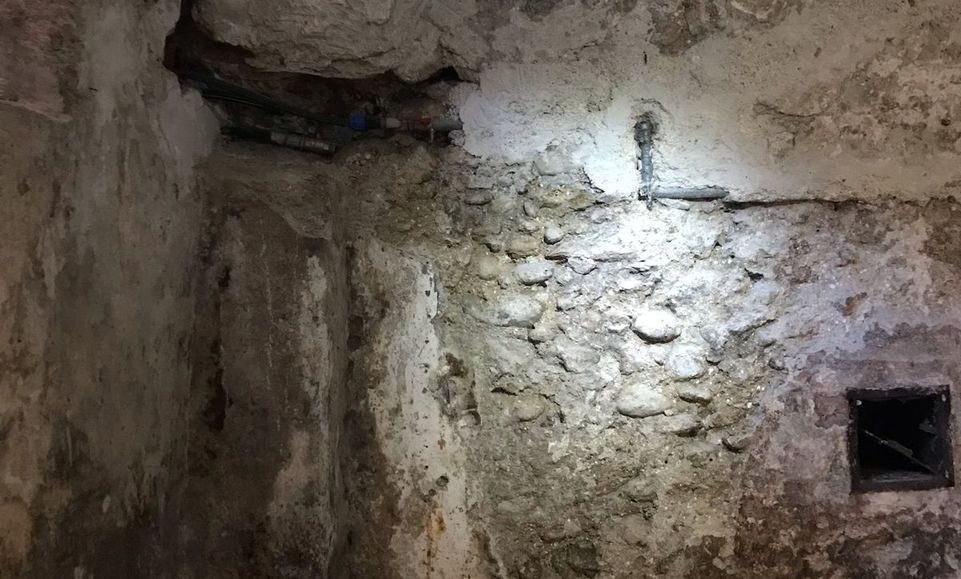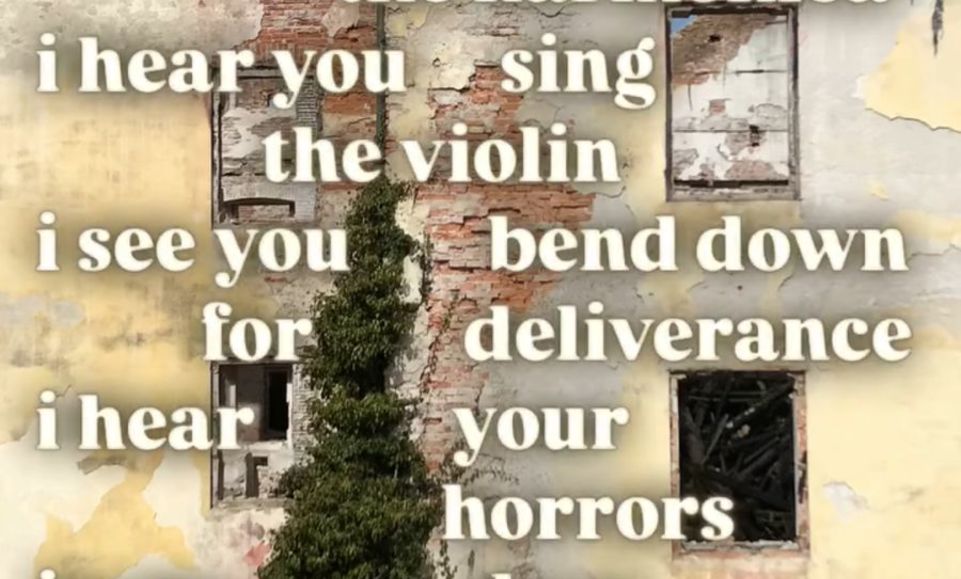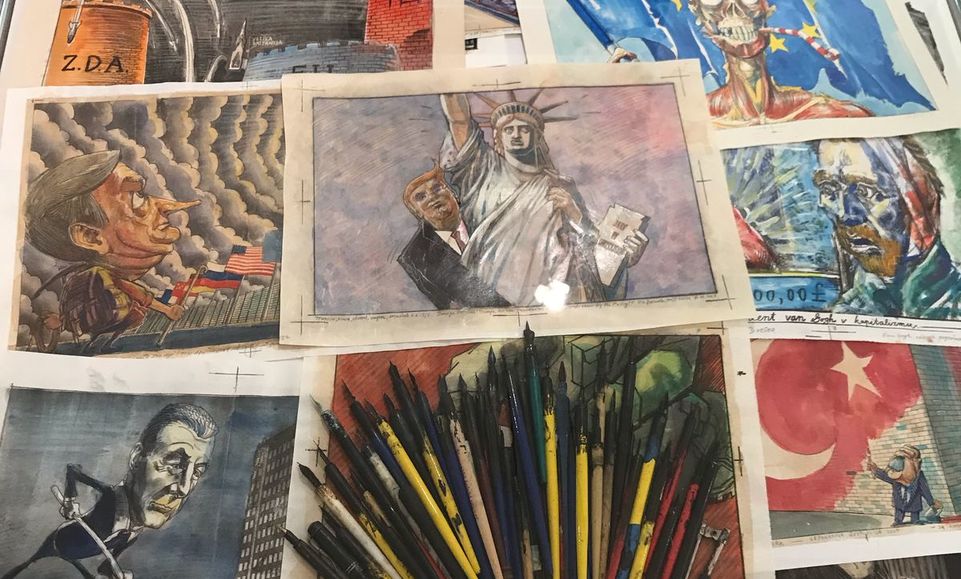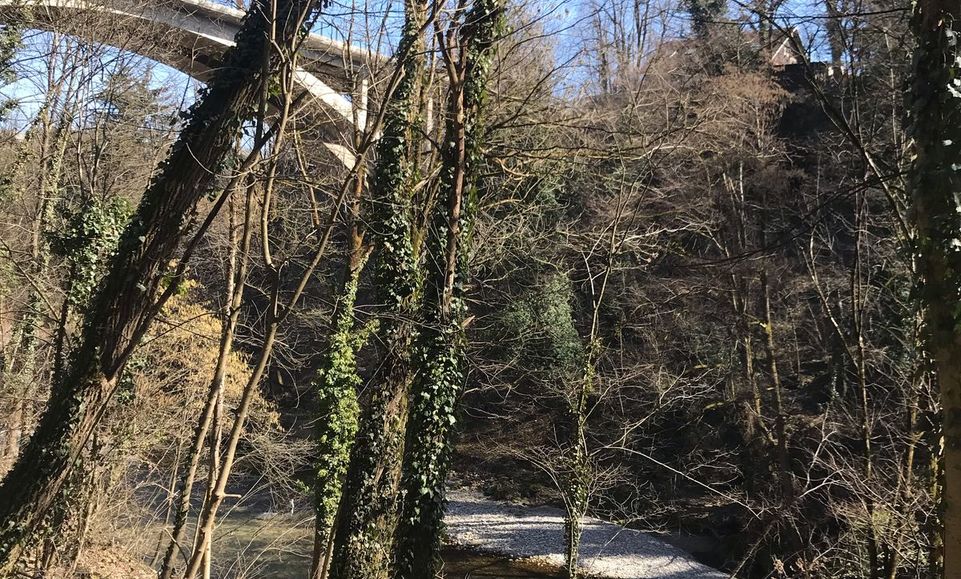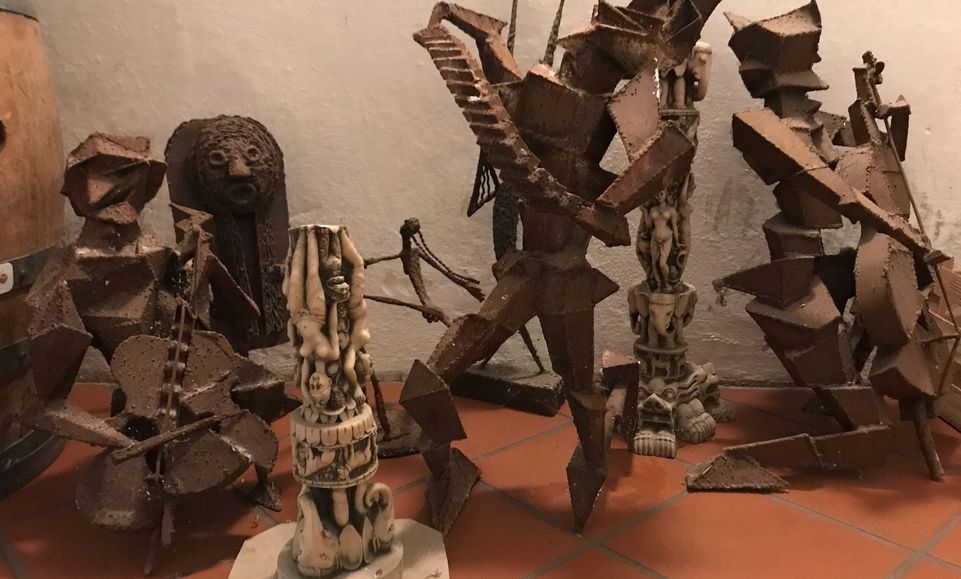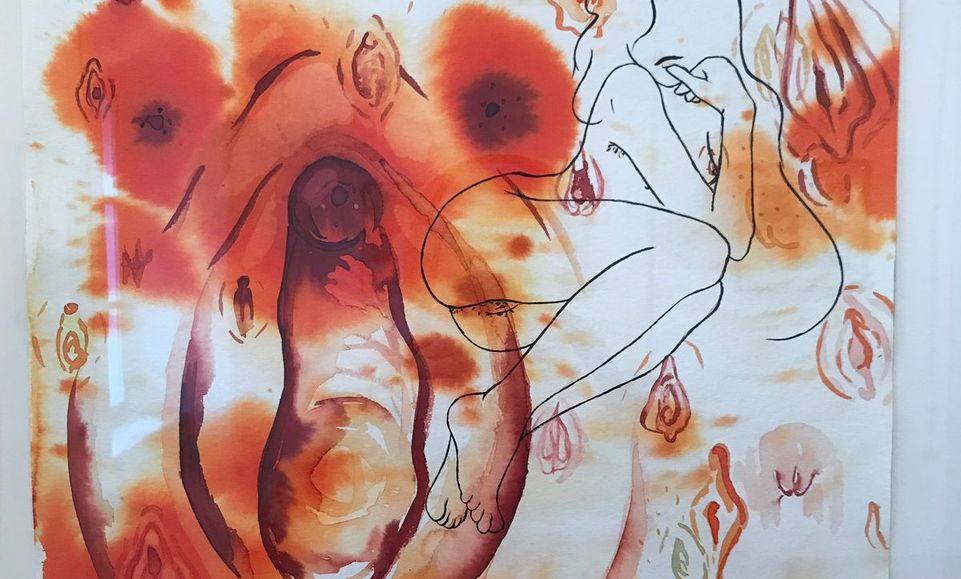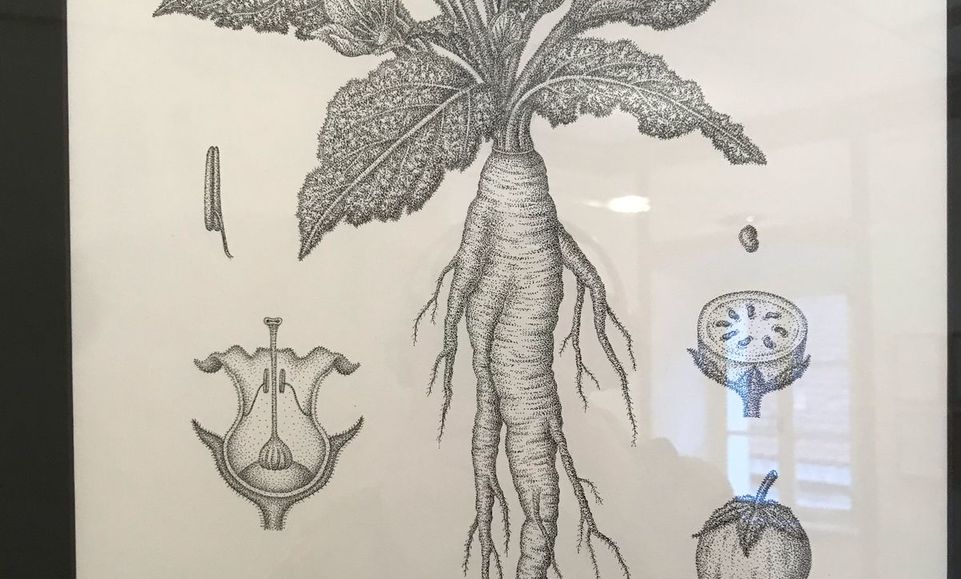Kranj feels somewhat familiar, and yet completely new. My first instinct in this city is that I will enjoy it here, since oftentimes I feel smaller cities provide a mental resting point that the capitals don't. Kranj is smaller in population (60,000) than my hometown, Gjakova (80,000). However, the differences are stark. We're accommodated at Layer House, a residency space/gallery/cafe/event venue which was the home of the Layer family of painters. Frescoes that have been done by them feel very naive and are still very much intact. This type of space is not something you find in my hometown. Let alone such acknowledgement and maintenance of cultural heritage. We, I believe, do not have the language for it.
Maybe this could be attributed to Slovenia being a richer country, the presence of which you feel very much in seemingly boheme, idyllic moments that are not overdone. Maybe, it could be attributed to Prešeren (Slovene poet) who, our city guide, told us was known for posing the question "Whether we will continue to be an agricultural society or focus on arts and culture?" to the slovenes. France Prešeren, a lawyer and poet (just like me), is attributed a societal mindset shift in the 19th century, which seems to be present in Slovenia even nowadays. Poetry, just like the question of whether to focus on developing the arts and cultural sector, are somewhat discarded where I'm coming from (at least I have personally faced much lack of care and attention for the art of writing and alternative methods of artmaking). Maybe, it has to do with reaching a societal level of wellbeing so that you can afford to deal with arts and culture, as most in Kosovo would allude to.
What I love, is that I heard here that even radical and autonomous spaces and methods of community organization, in at least one case (Metelkova), have managed to get recognition and state support, albeit there's the fact that such a space has started to serve as a tourist attraction, ultimately contributing to an alternative space that's build on principles of non-consumerism starting to serve a function in the neoliberal economy.
It is impossible for me to experience and witness places and situations here, without comparing cases, social and anthropological aspects, to my own home country, even if the starting point is actually (at the time being) quite different - that is to say the cultural, economical, geographical elements that make up Kosovo or Slovenia. My hometown, a place I spent the last two years in, is culturally quite rudimentary and so much could be done following Slovenian examples.
The city of Kranj has 14 galleries, hosts a Contemporary Art Festival yearly and two biennials, one on collaging and the other on textile art. Only a clear intention and investment towards art and culture could make for such a small town having such a thriving cultural life and being a home to such uncommon art forms. Another distinction is the presence of erotic art in public space (the so-called street gallery, Ulicna Galerija in Kranj). In my experience in Kosovo, representations of erotica in public were previously shut down for fear of public disapproval and losing municipal funding. A blend between contemporary art forms (illustrations, collage, printmaking) and traditional art (frescos, preservation of art history e.g. Puhar's method) is present in the city.
I find the mentions of Jože Plečnik interesting also. I am not per se, trained to think of public space and city design architecturally, however, there is an immediate distinction. In Slovenia older buildings have been preserved and the city architecture does not constitute high and new building conglomerates, which is the case with Prishtina and other cities in Kosovo, undergoing a type of gentrification. There, we are building high (hosting many empty buildings in the city), whereas here the buildings are low and there is a circularity to the objects in the city, in their manner of young people's squatting culture and claiming spaces for alternative cultural purposes. At least, these are my most intuitive feelings regarding what I've observed.
On another note, I saw a concert of Slovenian bands in the Layer House and went on a guided tour in the city and underground tunnels of Kranj. On the weekend, I ended up for a bit of time in an all-Albanian gathering for Kosovo's independence (who my friend from Kosovo took me to) in Ljubljana, and from there took it to a cathartic day in Tivoli Park discussing how we perceive these cultural differences among the two ethnicities, let's say. We were ruminating on how hell-bent Albanians anywhere in the world are on preserving and safeguarding their culture on one side, and trying to understand what Slovenian culture is about, to begin with.
During the first weekend here, I also ended up in carnival celebrations, with a group of people involved in the independent cultural scene in Ljubljana. We spent about six hours on the street, drumming and chanting, dressed up in costumes, stopping at certain locations. We ended up visiting Plac (a squat in Ljubljana) and I am further left with ponderings on how such a culture of political awareness, direct civic participation, community mobilization and reclaiming public space has come to be. I will continue to explore this question.
